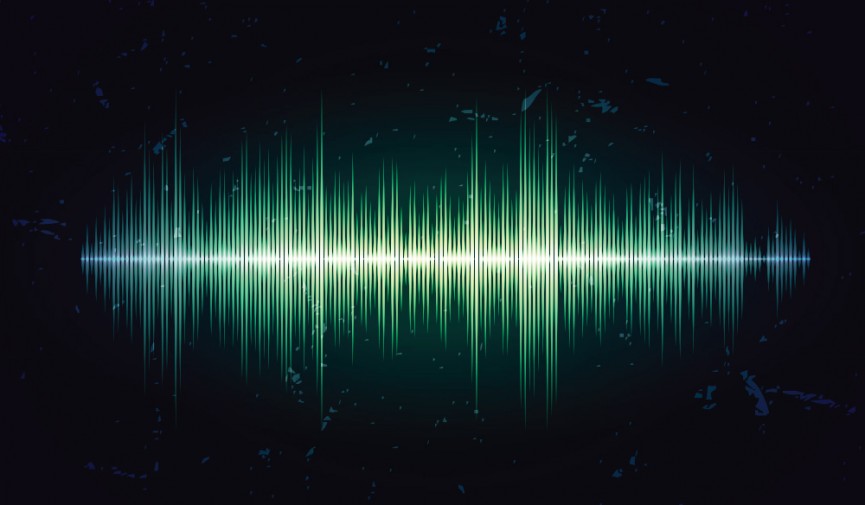Bad sound can easily ruin good footage. Use these tips when it comes time to set audio levels for video and film projects.
As a filmmaker and videographer you probably spend a lot of time trying to get the most beautiful shot possible on set. Then when you sit down to edit the video, more time is spent color correcting and grading. Then it’s time to move on to exporting, where you pick the perfect codec that will output good colors while minimizing compression.
However, when it comes to audio there’s usually not much more effort put into it than simply, “sounds good”.
Audio is probably the most overlooked and under-appreciated aspect of the filmmaking process. Audiences can forgive subpar cinematography, but subpar audio will make even the most loyal audiences disengaged. There seems to be a lot of misinformation out there about the correct way to level audio in videos, so let’s take a look at how to correctly set audio levels for video in the modern industry.
Correct Audio Levels

There’s a lot of debate online about the right way to level audio, but there’s one thing that everyone can agree on: you should never go above 0db. Even though your NLE may allow you to raise your audio levels all the way up to 6db, it’s advised by virtually everyone that you should keep your audio below 0db. This is because your audio will begin to clip after 0db, resulting in horrible distortion.
Think about it as a ceiling. As soon as your audio peaks and hits the ceiling, it will begin to get distorted. This is why explosions in hollywood movies sound awesome and explosions in bad YouTube videos sound like muffled junk. Most major NLEs and audio editing software will have red indicators pop up anytime your audio goes above 0. If you’re getting this warning, then your audio is too loud. For safety, no peaks should be above -6db.
Most video editors agree that the overall audio level of your audio mix (all of your audio combined) should normalized between -10db to -20db. I personally level my videos around -12db with occasional peaks to -8db. The trick here is to stay away from 0db as best you can. Experts differ on the exact numbers — because there are no exact numbers. Editing audio is a lot like editing video. At the end of the day, your ears should be your guides if you’ve adhered to the technical rules.
Some people say that if you are creating a video for the web, then you should get closer to 0db… but it all depends on the video you are producing. If you’re creating a film, you might want to have more range between your average mix level and your peaks. If you’re doing a simple web commercial, it might make more sense to have less range and a higher overall average level. You’ll figure out what works for you over time.
Recommended Levels
Here’s a few of my recommended level suggestions.
- Overall Mix Level: -10db to -14db
- Dialogue: -12db to -15db
- Music: -18db to -22db
- Sound Effects: -10db to -20db with occasional spikes up to -8db.
These recommendations are a little on the quiet side when compared to some industry experts, but I find it much better for an audience to turn up the volume than run the risk of peaking or distortion.

Before you finalize your film or video, take off your fancy studio headphones and go play your video on the platform in which your audience will be watching it. For example, if you’re working on a TV commercial, try watching your video on a TV to see how it sounds . It’s not uncommon for music producers to listen to their tracks in a car before they sign off on distribution. The same should be true for you. Whether it’s on a laptop, iPhone, or TV, listen to your video on the medium in which your audience will be watching and you’ll quickly find audio quirks.
It should also be noted that film distributors and TV broadcasters often have their own standards for audio levels, so you should absolutely consult with them before setting your audio levels. In NTSC countries, for example, peak audio levels must not exceed -10db with occasional -8db spikes, whereas PAL countries must not exceed -9db.
Do I Need to Use Bars and Tone?

You’ve probably seen color bars on a local TV station or at the beginning of an old tape recording. Bars and tone are used to calibrate a system to optimally playback your video or film. Bars are for color, so we’ll cover those in another article. Tone, however, exclusively deals with audio and it’s really simple to understand. Tone is just a reference engineers use to correctly output your video at the appropriate level. And it sounds like one long beep.
Some people say that tone should be set to the average loudness of your video, but this is only an opinion. In fact, there is no set-in-stone standard for the loudness at which tone should be set it all depends on the broadcasters preferences. For example FCPX’s tone default is -12db and Premiere Pro’s is -20db. The trick is to simply keep your tone decibels between -6db and -24db. Truthfully, in most circumstances, you probably won’t even need to put bars and tone at the start of your video.
Good Audio is More Than Levels
While levels do play a big part when it comes to creating professional audio, there’s a lot more that needs to be considered and adjusted to get the best audio possible. Effects like compressors, limiters, noise reducers, and (most importantly) EQ will all help contribute to a well balanced and professional sounding video.
Article from: Premium Beat.

